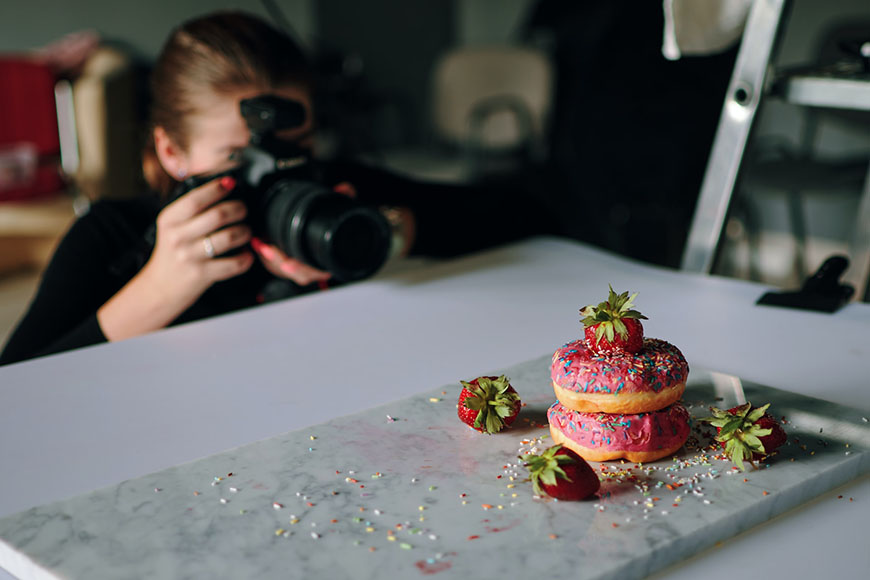The Art of Persuasion: The Role and Expertise of an Advertising Photographer
Introduction
In the world of marketing and advertising, the visual impact of an image can make all the difference in capturing the attention of the target audience and conveying the brand’s message effectively. This is where the expertise of an advertising photographer comes into play. These creative professionals are skilled in the art of visual storytelling, employing their technical prowess and artistic vision to create compelling images that persuade, engage, and leave a lasting impression on consumers. In this article, we will explore the world of advertising photography, understanding the role of the advertising photographer, their skills, working process, and the impact they have on the success of advertising campaigns.
Defining Advertising Photography
Advertising photography is a specialized genre within commercial photography that focuses on creating visually appealing and persuasive images for marketing and advertising purposes. The primary goal of advertising photography is to promote products, services, or brands by eliciting emotional responses, piquing curiosity, and encouraging consumers to take action, such as making a purchase or engaging with the brand.
The Role of an Advertising Photographer
An advertising photographer plays a critical role in the success of an advertising campaign. They are responsible for translating the client’s marketing objectives and creative vision into impactful visual imagery. Here are some key aspects of their role:
- Conceptualization: Working closely with art directors, creative directors, and marketing teams, the advertising photographer helps develop the visual concept for the campaign. They brainstorm ideas, plan the visual execution, and ensure that the imagery aligns with the brand’s message and identity.
- Technical Expertise: Advertising photographers possess a deep understanding of photography equipment, lighting techniques, composition, and post-processing. They use their technical skills to create images that are visually stunning and meet the client’s requirements.
- Visual Storytelling: An advertising photographer is a visual storyteller. They know how to convey a brand’s narrative, product features, or service benefits through imagery that resonates with the target audience.
- Collaboration: Collaboration is a crucial aspect of advertising photography. Photographers work closely with a team of professionals, including stylists, makeup artists, set designers, and models, to bring the creative vision to life.
- Problem Solving: Advertising photographers often face challenges during photoshoots, such as unfavorable weather conditions or uncooperative subjects. They are adept at troubleshooting and finding creative solutions to achieve the desired results.
Skills and Expertise
To excel as an advertising photographer, certain skills and expertise are essential:
- Creativity: Advertising photographers need to think outside the box and come up with fresh, innovative ideas that can capture the audience’s attention in a crowded advertising landscape.
- Visual Aesthetics: A keen eye for aesthetics allows photographers to compose images that are visually appealing, balanced, and in line with the brand’s identity.
- Understanding of Marketing: A good advertising photographer understands the principles of marketing and branding, ensuring that their images align with the overall marketing strategy and objectives.
- Technical Proficiency: Proficiency in handling cameras, lighting equipment, and post-processing software is a must for producing high-quality images.
- Communication: Effective communication skills are essential to collaborate with clients, art directors, and the entire creative team, ensuring that everyone is on the same page regarding the campaign’s vision.
Working Process of an Advertising Photographer
- Understanding the Brief: The process begins with a thorough understanding of the client’s brief, marketing objectives, and target audience. This helps the photographer develop a clear direction for the photoshoot.
- Concept Development: Collaborating with the creative team, the photographer helps shape the visual concept and mood for the campaign. This includes deciding on the location, styling, props, and models (if required).
- Preparation: The photographer takes care of logistics, such as acquiring permits for shooting in specific locations and organizing the necessary equipment and crew.
- Photoshoot Execution: On the day of the shoot, the photographer works closely with the team to capture the planned images. They direct the models, fine-tune lighting, and ensure that the images align with the creative vision.
- Post-Processing: After the shoot, the photographer selects the best images and performs post-processing, including color correction, retouching, and enhancing the images’ visual impact.
- Delivery and Client Approval: The final images are delivered to the client for review and approval. Any necessary adjustments are made based on client feedback.
The Impact of Advertising Photography
- Brand Identity and Recognition: Powerful advertising photography helps create a distinct brand identity and increases brand recognition among consumers.
- Emotional Connection: Compelling images can evoke emotions and forge a strong connection between the audience and the brand, fostering loyalty and brand affinity.
- Increased Engagement: Visually striking images attract attention and increase engagement, leading to higher click-through rates and conversion rates for online advertising.
- Competitive Advantage: Exceptional advertising photography sets a brand apart from its competitors, enabling it to stand out in a crowded marketplace.
- Campaign Success: The effectiveness of an advertising campaign is often directly linked to the impact of its visual elements. Well-executed photography can significantly contribute to the success of the campaign. For more information on Advertising photographer ,please visit the site.
Conclusion
Advertising photography is a powerful tool in the world of marketing, enabling brands to tell stories, create emotional connections, and persuade consumers to take action. The role of an advertising photographer goes beyond capturing images; they are visual storytellers and creative collaborators who play a crucial role in shaping the success of advertising campaigns. By leveraging their technical expertise, artistic vision, and understanding of marketing principles, advertising photographers bring brands to life through captivating imagery, leaving a lasting impression on audiences worldwide.




